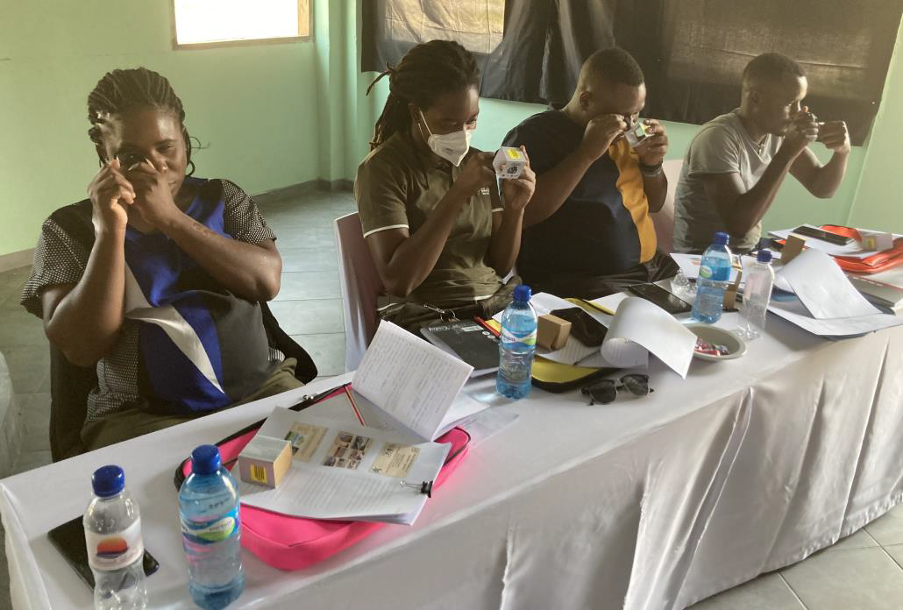Namibian law enforcement officers learn how to recognize and act on illegal trade in forest products.
The Walvis Bay port of Namibia is bustling. A newly enlarged container terminal, expanded rail lines and paved access points are helping the port become the most cost-effective transshipment hub in the region, servicing all of southern Africa. Importantly, the state-owned port also has ambitions to reduce the volume of illicit goods that have long flowed through its transit points, including timber, wildlife products, counterfeit consumer products, and narcotics.
Much has been done in recent years to try and stem the illegal wildlife trade. But only recently has the Namibian government pushed to combat forest crime and illegal trade in timber and forest products, an effort the Forest Service Office of International Programs is pleased to support, in collaboration with the Department of State.

Truck filled with kiaat (Pterocarpus angolensis) waiting to cross from Zambia into Namibia, Katima Mulilo border (credit U.S. Forest Service).
“Our constitution calls for the protection and sustainable use of our natural resources for the benefit of the current and future generations. This is the rally call that underscores our resolve to protect our resources,”
said Namibia’s Director of Forestry, Mr Johnson Ndokosho, in his welcoming remarks that opened the Katima Mulilo and Walvis Bay workshops.
The Forest Service has partnered with Namibian Ministry of Environment, Forestry and Tourism’s Directorate of Forestry and the Namibia Nature Foundation to design and implement workshops that increase the capacity of Namibian law enforcement agencies to detect, interdict, and seize illegal forest products.
A team of Forest Service timber and forest products specialists recently returned from conducting workshops at two of Nambia’s most important trade locations: the port of Walvis Bay and the Katima Mulilo post at the Namibia-Zambia border. Workshop instruction included foundational topics in wood identification, including wood biology and physiology; key anatomical features used to identify timber species; basic tools and methods to visually identify timber species; and the use of a dichotomous key to identify commonly traded timber species in Namibia. More than 40 Namibian law enforcement and natural resource management professionals participated in the workshops and learned to how to identify commonly traded species in Namibia.

“I will be using the timber samples in my everyday duties. I have learned new things that will make my work more effective,”
said a Walvis Bay workshop participant.
Illegal logging and trafficking of forest products have negative environmental, social and economic impacts. Such practices hurt local communities that rely on forest products, depress world timber prices and undermine the rule of law. The U.S. Forest Service supports policy and technical efforts to curb illegal logging and illegal trade in forest products.